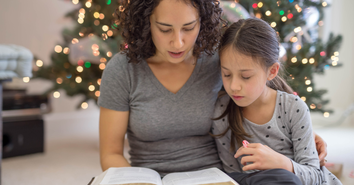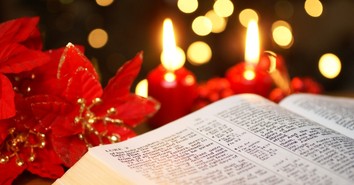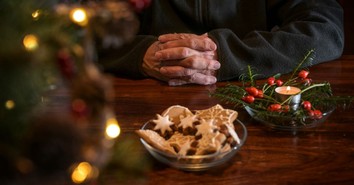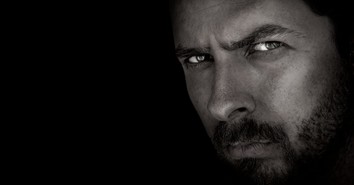What Role Should a Deacon Have?

In part 1 of this series of posts on the office of deacon, I briefly presented support for reading 1 Timothy 3:11 as best understood to refer to woman deacons, not wives of male deacons. Additionally to that exegetical and historical evidence, I observe that the only person identified with anything close to the title of deacon in the Bible is a woman, Phoebe, a diakonos of the church at Cenchreae (Rom 16:1–2).
In part 2, I join Gregg Allison in challenging the prevailing definition of the deacon’s function in the church as physical needs. The office of Deacon has some ambiguity to it in church practice. This is due in part to the minimal details provided in the New Testament. Some churches have no deacons (e.g., Calvary Chapel), some have deacons that actually function as elders[1] (e.g., some Baptist churches), and some churches have deacons functioning alongside elders (e.g., the Reformed Church of America). For churches with deacons and elders, the common practice is to distinguish duties so that deacons are responsible for the physical needs of the congregation and the building, while elders focus on the spiritual matters of teaching, supervising staff, and participating in denominational activities.
The common spiritual-physical distinction of elder and deacon functions neatly follows the difference in the qualifications that elders must be able to teach (1 Tim. 3:2), and be able to exhort in sound doctrine and refute those who contradict it (Tit. 1:9) while nothing similar is stated as a qualification for deacons. The spiritual-physical distinction also follows the typical reading of Acts 6:1–6, where seven men take the task of managing the distribution of food for church widows and relieve the Apostles to focus on the spiritual tasks of prayer and the ministry of the Word. Since the seven are male, many churches commonly limit the office of deacon to men.
Alongside our consideration of the office of deacon for the evangelical church, I observe that the recent revival of the permanent order of deacon in the Roman Catholic Church does not limit the office to physical care. The catechism of 1997 specifies deacon service “to the People of God through the ministry of Worship, Word, and Charity in communion with the bishop and his presbyters.”[2] While tradition is helpful, our interest is first in the biblical teaching, and whether the spiritual-physical distinction is warranted. We will consider both tradition and Scripture.
First, the evidence from the early church does not support the typical interpretation that Acts 6:1–6 is the origin for the office of deacon. At best, the seven men are prototypes of the office of deacon; much like the Apostles may be a prototype for the office of elder.[3] Even if that were true, the historical incident of the prototype should not be taken as the determination in limiting ways as has been the practice for some churches, such as that deacons are only responsible for physical needs of the church, that there must be only seven, and that they must be men.[4] We have nothing in Acts or the rest of the New Testament indicating these determinations. The seven men are not called deacons, and the cognate verb “to serve” is used alike for ministry at the table and distribution (Acts 6:1–2) and for ministry of teaching the word of God (Acts 6:4). Stephen and Philip are later described in other ministry than physical care: preaching (Acts 6:8—7:60) and evangelism (Acts 8:4–13, 26–40).[5] Luke does describe Philip with a title, the evangelist (Acts 21:8), with his daughters who are Prophetesses. Extant writings from the early centuries of the church do not show that those teachers understood Acts 6 as determinative for the office of deacon. The earliest case of identifying the seven as deacons is Irenaeus (c. 185), a view not shared by his contemporary Clement of Alexandria writing on the same passage.[6] Therefore, Acts 6 is not the right starting point for defining the office of deacon as limited to physical needs.
Second, early church practice did not follow a limitation of deacons to the physical needs of the church or a limitation to only male deacons. In the third and fourth centuries, the office of deacon had four kinds of duties: liturgical, educational, charitable, and administrative. Among these functions, deacons assisted the elders in the serving of the Eucharist, reading the Gospel, teaching catechumens, preaching in the absence of an Elder, and sometimes attending general church councils. Sometimes, deacons were full-time paid positions, similar to church staff of today. Women deacons were particularly involved in these liturgical, educational, and charitable functions with women, assisting in the instruction and baptism of women, visiting the sick, and providing care for orphans.[7] The early church even developed a female form of the term deacon (diakonissa) that appears earliest in the canons of the Council of Nicaea (325). Despite the high regard for female deacons by Tertullian, Origen, Basil, and Chrysostom, and the ordination of women deacons as shown in the canons of church councils, the office evaporated from the church in the West by the sixth century and in the East by the twelfth century.[8]
What changed to lose both the office of deacon and the scope of ministry beyond care for physical needs? The rise of monasticism for men and women has been blamed for having taken over what were deacon functions. Also, the reversion to a theology of the New Covenant in terms of the Old Covenant structures of priesthood and the Lord’s Supper as a sacrifice excluded women.[9] Accordingly, the woman’s menstrual cycle, seen as ritual defilement of the altar and temple in the Old Covenant cult, was again now viewed in the medieval church in the East and West as defiling for the altar of the Eucharist.[10] Such were some of the changes resulting in the exclusion of women from the diaconate.
The recovery of many things at the time of the Reformation included deacons, but in a diminished capacity from early church practice. Ross observes that sixteenth-century church leaders established the contemporary functions of elders and deacons along the lines of spiritual matters and physical matters. Elders were responsible to maintain godly discipline; deacons were responsible to distribute the church’s charity to the poor.[11] In a strange development to the current time, what the early church had as deacon functions are now what elders commonly do in churches to assist the pastor(s): distributing the elements of the Lord’s Supper, visitation of members, assisting in teaching, attending synods, and sharing the discipline of the church.[12] With awareness of this confusion about the deacon function in church practice, we can turn from tradition to the passages in Scripture that directly reveal the office of Deacon (Part 3 in this series).
[1] I will use the term elders to refer to what the NT also calls pastors and overseers. I am persuaded that these three terms refer to the same office, which is my intention by the term elder throughout.
[2] William T. Ditewig, “Women Deacons: Present Possibilities,” in Gary Macy, William T. Ditewig, Phyllis Zagano, Women Deacons: Past, Present, Future (Mahwah, NJ: Paulist Press: 2011), 46.
[3] John Ross, “A Reconsideration of the Diaconate,” Scottish Journal of Theology, 12 no. 9 (1959): 152.
[4] The church at Rome in 251 had only seven deacons and forty-six presbyters, a practice that continued for several generations in many churches, but not always. Philip Schaff and David Schley Schaff, History of the Christian Church, vol. 1 (New York: Charles Scribner’s Sons, 1910), 499–501.
[5] Gregg R. Allison, Sojourners and Strangers: The Doctrine of the Church (Wheaton: Crossway, 2012), 241–42.
[6] Ross, “A Reconsideration,” 152.
[7] Ross, “A Reconsideration,” 153.
[8] Lucy Rider Meyer, Deaconesses: Biblical, Early Church, European, American with the Story of How the Work Began in the Chicago Training School and the Chicago Deaconess Home, 3rd ed. (Cincinnati: Cranston & Stow, 1889), 21.
[9] Robert L. Saucy, “The Ministry of Women in the Early Church,” in Robert L. Saucy and Judith K. TenElshof, Women and Men in Ministry: A Complementary Perspective, eds., Saucy and TenElshof (Chicago: Moody Press, 2001), 180.
[10] Gary Macy, “Women Deacons: History,” in Gary Macy, William T. Ditewig, Phyllis Zagano, Women Deacons: Past, Present, Future (Mahwah, NJ: Paulist Press: 2011), 31.
[11] Ross, “A Reconsideration,” 155.
[12] Ross, “A Reconsideration,” 156.
For more, visit the Good Book Blog, a seminary faculty blog from Talbot School of Theology.
Originally published November 20, 2014.







